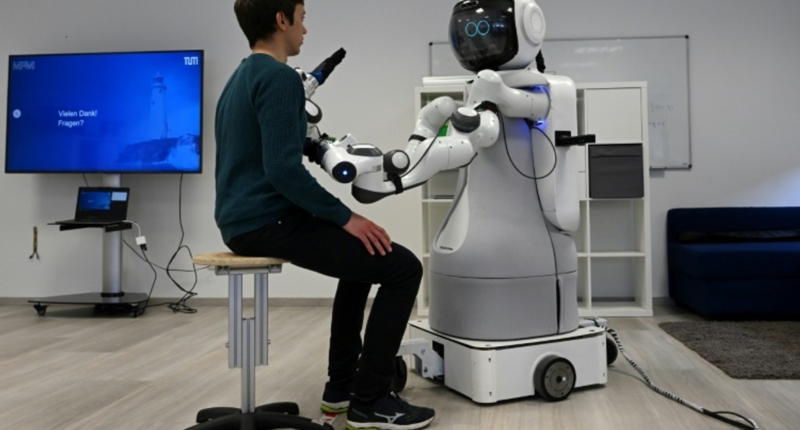Germany is facing healthcare staffing shortages due to its rapidly ageing society, with an estimated 670,000 carer posts to go unfilled by 2050. To combat this issue, German scientists have developed a white-coloured humanoid robot called Garmi that can perform diagnostics on patients, provide care and treatment services, and potentially offer more personalized care services to elderly people in remote communities or care homes. Garmi is a product of a new sector called geriatronics, which taps advanced technologies like robotics, IT, and 3D technology for geriatrics, gerontology, and nursing. The robot’s success will depend on whether patients can trust it and use it as they would a smartphone. Eva Pioskowik, the director of Sankt Vinzenz retirement home, said that the robot could not replace health workers but could allow staff to spend more time with residents. Although there is no commercial scale for Garmi yet, statistics show that the technology is urgently needed.
Germany Turns to Robots for Elder Care Due to Lack of Health Workers
Germany is tapping into advanced technologies like robotics, IT, and 3D technology for geriatrics, gerontology, and nursing, with the creation of a new sector called geriatronics. This sector has given birth to a white-coloured humanoid robot called “Garmi,” which is equipped with advanced features for diagnostics, care, and treatment of patients. Garmi stands on a platform with wheels and has a black screen on which two blue circles, acting as eyes, are attached.
Garmi was built by about a dozen scientists with the help of medical practitioners at the Munich Institute of Robotics and Machine Intelligence, based in Garmisch-Partenkirchen. This ski resort has one of the highest proportions of elderly people in Germany. The robot is a significant innovation since Europe’s most populous country is aging rapidly, with an estimated 670,000 carer posts to go unfilled by 2050.
The researchers are racing against time to create robots that can take over some of the tasks carried out today by nurses, carers, and doctors due to the growing number of people needing care. The Garmisch laboratory aims to offer a more personalized service to people living in remote communities, homes, or care homes by serving meals, opening a bottle of water, organizing video calls with family and friends, and even calling for help in case of a fall.
Abdeldjallil Naceri, the lead scientist of the lab, said: “We have ATMs where we can get cash today. We can imagine that one day, based on the same model, people can come to get their medical examination in a kind of technology hub.” With robots taking over some of the tasks carried out today by health workers, doctors could evaluate the results of the robot’s diagnostics from a distance.
Garmi is a promising solution for Germany’s aging population and lack of health workers, offering elderly citizens better health care services.
Germany’s Robot for Elder Care: A Future Solution to Healthcare Shortages
Garmi, the white-coloured humanoid robot, has been developed by scientists from the Munich Institute of Robotics and Machine Intelligence. A product of a new sector called geriatronics, Garmi uses advanced technologies for geriatrics, gerontology, and nursing. With Germany’s rapidly ageing society and healthcare staffing shortages, the robot is a promising solution to fill in the gaps.
Garmi can perform diagnostics on patients and offer care and treatment services. It is equipped with a black screen that displays two blue circles that act as its eyes. The robot stands on a platform with wheels, and about a dozen scientists built it with the help of medical practitioners.
Garmi’s success will depend on how well it can integrate into society, with the major challenge being whether or not patients will accept the robot. It will need to gain the trust of people so that they can use it just like they use a smartphone today. Nevertheless, Abdeldjallil Naceri, the lead scientist of the lab, believes that this kind of technology must be integrated into society by 2030.
For now, the robot is being tested in a laboratory in Garmisch-Partenkirchen, where medical practitioners like retired doctor Guenter Steinebach offer their ideas and feedback. The goal is to create robots that can take over some of the tasks carried out today by nurses, carers, and doctors, with the potential to offer more personalized care services to elderly people in remote communities or care homes.
Eva Pioskowik, the director of Sankt Vinzenz retirement home in Garmisch, a partner of the project, said that the robot could not replace health workers. Instead, it could allow staff to spend more time with residents. Although it is still unknown when Garmi will be ready on a commercial scale, the statistics show that the technology is urgently needed.
Don’t miss interesting posts on Famousbio










